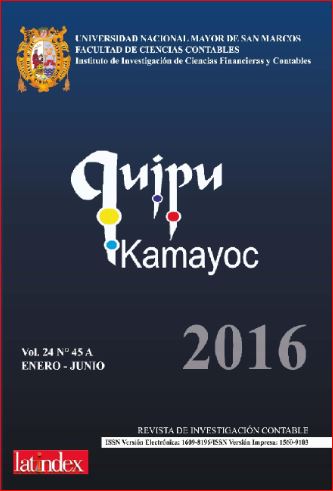THE PROBLEM OF ECONOMIC AND BUSINESS DEVELOPMENT IN NORTH LIMA
DOI:
https://doi.org/10.15381/quipu.v24i45.12465Keywords:
Development, socio-economic, businessAbstract
Currently there are studies -from various approaches- that present and recognize the importance of socio-economic and business growth and development in the districts identified as Lima Norte (Ancon, Carabayllo, Comas, Independencia, Los Olivos, Puente Piedra, San Martin de Porres and Santa Rosa). These approaches come from the economy (growth); from the social (diversification and citizen mobility); from culture (provincial presence in the area); from the education (the levels and professionalism); from the organizational (political and business); from marketing and psychology (identification and local presence). And all have been manifested in studies from the academic and business world. By demographic description and the social, economic, political, organizational, cultural, educational and health characteristics, the nuances of its recent past are externalized which are reflected according to the place of origin of the citizens responsible of that development or its predecessors - parents and family in general - which make a difference but at the same time, provide experiences, stories and traditions that are reflected in this development.
Downloads
Downloads
Published
Issue
Section
License
Copyright (c) 2016 Francisco Javier Wong Cabanillas

This work is licensed under a Creative Commons Attribution-NonCommercial-ShareAlike 4.0 International License.
AUTHORS RETAIN THEIR RIGHTS:
a. Authors retain their trade mark rights and patent, and also on any process or procedure described in the article.
b. Authors retain their right to share, copy, distribute, perform and publicly communicate their article (eg, to place their article in an institutional repository or publish it in a book), with an acknowledgment of its initial publication in Quipukamayoc .
c. Authors retain theirs right to make a subsequent publication of their work, to use the article or any part thereof (eg a compilation of his papers, lecture notes, thesis, or a book), always indicating the source of publication (the originator of the work, journal, volume, number and date).





























